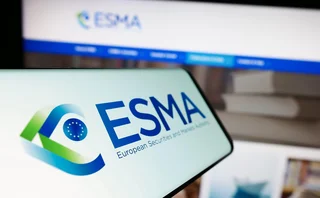
IASB proposes simplifying fair-value measurement
The International Accounting Standards Board (IASB) has sought to simplify its standards on fair-value measurement, bringing International Financial Reporting Standards (IFRS) further into line with US Generally Accepted Accounting Principles (Gaap).
The proposals seek to consolidate and simplify existing standards on fair value, by establishing "a single source of guidance for fair-value measurements", clarifying the definition of fair value and enhancing disclosure of fair-value measurements.
The proposed definition of fair value is "the price that would be received to sell an asset or paid to transfer a liability in an orderly transaction between market participants", which is verbatim the definition of fair value under US Gaap. The IASB has emphasised its intent to converge IFRS and US Gaap, including taking Statement of Financial Accounting Standards (SFAS) 157 - the US Gaap rule that details fair value - as a starting point for formulating the proposals.
However, the IASB's proposals differ in a few minor areas from US Gaap. One such discrepancy arises in valuing assets. Under SFAS 157, it is assumed the transaction that the fair-value measurement is based on takes place in the principal market or, in its absence, the most advantageous market available to the reporting institution. In contrast, the IASB proposes it should be assumed the transaction takes place in the most advantageous market to which the valuing institution has access. Nevertheless, despite this and a handful of other discrepancies, the IASB asserts "these differences result in improvements over SFAS 157".
With respect to disclosure, the IASB wants financial statements to list inputs used by the reporting institution when measuring the fair-value of an asset or liability. Meanwhile, for level three measurements - which rely on unobservable inputs due to a lack of relevant market data - it will be necessary for the reporting institution to show the effect these measurements will have on profit or loss or other comprehensive income.
In a written statement, David Tweedie, chairman of the IASB, hailed the proposals as "an important milestone in our response to the global financial crisis".
"The proposed guidance ensures consistency with US Gaap on issues related to fair-value measurement and would achieve overall convergence with US Gaap," he added.
"In practice, it's going to result in fair-value measurement standards being aligned, which is the ultimate objective. Also - and importantly from an IFRS point of view - the proposals look to codify what many practitioners would be doing anyway under the IASB's expert advisory panel report released in October 2008, effectively making this educational guidance mandatory," said Andrew Spooner, London-based partner at Deloitte.
Spooner pointed to one proposed amendment that could prove beneficial for financial institutions. Currently under IFRS, bid prices are used to measure assets, whereas offer prices are used to measure liabilities; mid-prices may only be used if the institution has offsetting positions. However, the IASB's proposals would allow mid-market prices to be used for fair-valuing assets and liabilities within the bid/offer spread.
"In practice, that may make life a lot easier for financial institutions as well as aligning with what their US counterparties are doing," explained Spooner.
Fair-value measurement has proved a contentious issue over the past 18 months. Proponents claim it is the most appropriate and representative measure of a company's financial health. Critics assert it is procyclical and has exaggerated the frailty of companies' balance sheets.
Both the IASB and FASB have released clarifications and amendments since October 2008 in order to eradicate perceived flaws in their respective standards. Encouraged by the Group of 20, the two boards have also accelerated their efforts to align standards on financial instruments accounting. In October, the IASB is set to publish an exposure draft for the replacement of International Accounting Standard 39 - the rule for financial instruments - which is expected to be a template standard for both boards.
See also: Setting global standards
New FASB standards threaten off-balance-sheet vehicles
Only users who have a paid subscription or are part of a corporate subscription are able to print or copy content.
To access these options, along with all other subscription benefits, please contact info@risk.net or view our subscription options here: http://subscriptions.risk.net/subscribe
You are currently unable to print this content. Please contact info@risk.net to find out more.
You are currently unable to copy this content. Please contact info@risk.net to find out more.
Copyright Infopro Digital Limited. All rights reserved.
As outlined in our terms and conditions, https://www.infopro-digital.com/terms-and-conditions/subscriptions/ (point 2.4), printing is limited to a single copy.
If you would like to purchase additional rights please email info@risk.net
Copyright Infopro Digital Limited. All rights reserved.
You may share this content using our article tools. As outlined in our terms and conditions, https://www.infopro-digital.com/terms-and-conditions/subscriptions/ (clause 2.4), an Authorised User may only make one copy of the materials for their own personal use. You must also comply with the restrictions in clause 2.5.
If you would like to purchase additional rights please email info@risk.net
More on Regulation
ECB bank supervisors want top-down stress test that bites
Proposal would simplify capital structure with something similar to US stress capital buffer
Clearing houses warn Esma margin rules will stifle innovation
Changes in model confidence levels could still trip supervisory threshold even after relaxation in final RTS
BlackRock, Citadel Securities, Nasdaq mull tokenised equities’ impact on regulations
An SEC panel recently debated the ramifications of a future with tokenised equities
CCPs trade blows over EU’s new open access push
Cboe Clear wants more interoperability; Euronext says ‘not with us’
Who is Selig? CFTC pick is smart and social, but some say too green
Colleagues praise crypto smarts and collegial style, but views on prediction markets and funding trouble Senate
EU single portal faces battle to unify cyber incident reporting
Digital omnibus package accused of lacking ambition to truly streamline notification requirements
Basel Committee members ‘buying time’ before fixing FRTB mess
Despite inconsistencies today, regulators maintain they want to align global regime eventually
How Basel III endgame will reshape banks’ business mix
B3E will affect portfolio focus and client strategy, says capital risk strategist







